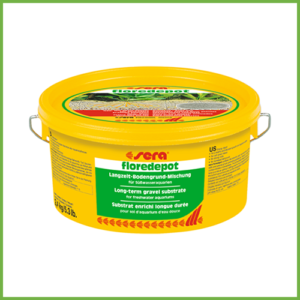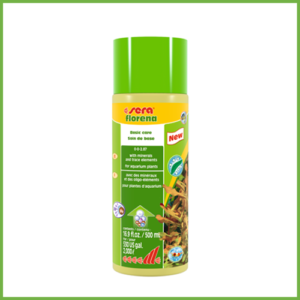Description
Bacopa Colorata


Overview
Bacopa Colorata, a vibrant variant of Bacopa caroliniana, is a popular freshwater aquarium plant valued for its striking pink to reddish-bronze foliage under optimal conditions. Native to North America, particularly wetlands and marshes, this hardy stem plant belongs to the Plantaginaceae family (previously Scrophulariaceae). Its aesthetic appeal, ease of care, and adaptability make it a favorite for both beginner and experienced aquarists. Known as Lemon Bacopa due to its citrus-like scent when leaves are crushed, it adds both visual and functional benefits, such as oxygenating water and providing shelter for fish and invertebrates.
Care Requirements
Lighting: Colorata thrives in moderate to high lighting (20–35 PAR). Intense lighting enhances its reddish-pink colouration, while low light results in greener leaves. A photoperiod of 8–10 hours daily is ideal.
Water Parameters:
- Temperature: 20–28°C, though it tolerates cooler temperatures down to 14°C.
- pH: 6.0–8.0.
- Hardness: 2–15 GH, with softer water promoting better colour and growth.
Substrate: Grows in sand, gravel, or nutrient-rich substrates like a sand-clay mix. Root tabs or liquid fertilizers (rich in iron and micronutrients) enhance growth and colouration, though it can survive on fish waste alone in low-tech setups.
Nutrients: Use liquid fertilizers (iron, potassium, magnesium) weekly or slow-release root tabs to prevent nutrient deficiencies. Avoid over-fertilization to reduce algae risk.
CO2: Not mandatory but recommended for vibrant colour and faster growth. Low CO2 levels can lead to muted colours, especially in high-tech tanks.
Tank Requirements: Prefers gentle to moderate water circulation to distribute nutrients effectively without stressing the plant.
Planting and Propagation
Planting:
- Select healthy stems (7–15cm long) and remove leaves from the bottom 5cm. Plant stems 2–5cm deep in the substrate using tweezers to avoid damaging fragile stems.
- Space stems adequately to prevent nutrient competition.
- Alternatively, allow stems to float until roots develop before planting. Plant weights can anchor stems in loose substrates.
Propagation:
- Stem Cuttings: Cut healthy stems below a node (with 3–4 leaf nodes), remove lower leaves, and replant in the substrate or float until roots form.
- Lateral Shoots: Clip side shoots from nodes and replant for bushier growth.
- Division: Gently separate clustered stems and roots to expand the plant across the tank.
- Floating Leaves: Fallen leaves can develop roots if left floating, creating new plants.
- Regular pruning encourages new shoots, enhancing density and aquascape fullness
Maintenance
- Trimming: Regular pruning prevents leggy growth and promotes bushiness. Trim tops or lateral shoots with sharp scissors and replant cuttings. Remove dead or yellowing leaves to maintain water quality and aesthetics.
- Cleaning: Gently clean leaves during water changes to remove algae and debris, ensuring light penetration.
- Fertilization: Use liquid fertilizers (iron, potassium, magnesium) weekly or slow-release root tabs to prevent nutrient deficiencies. Avoid over-fertilization to reduce algae risk.
- Water Changes: Perform weekly partial water changes (20–30%) to maintain water quality and prevent nutrient imbalances.
- Placement: Ideal as a midground or background plant due to its height (up to 16–50 cm). It can hide equipment or create a natural backdrop.
Challenges and Tips
Challenges:
- Algae Growth: Excessive nutrients or prolonged light exposure can cause algae on leaves. Reduce feeding, adjust lighting duration (6–8 hours), and maintain balanced nutrients.
- Floating Stems: Stems may uproot in loose substrates. Use plant weights or ensure deeper planting.
- Pest Infestations: Snails or insect nymphs (e.g., dragonfly, damselfly) may harm plants or tank inhabitants. Quarantine and disinfect new plants with a bleach dip before introduction.
- Melting: Poor water quality or sudden environmental changes can cause leaf melt. Acclimate plants gradually and maintain stable parameters.
- Slow Growth: Initial slow growth is normal, but inadequate light, nutrients, or CO2 can exacerbate it. Ensure optimal conditions for establishment.
- Colour Fading: Low CO2, high alkalinity (KH), or insufficient light/nutrients can dull the reddish-pink hues. Adjust CO2, lighting, and fertilize with iron supplements.
Tips:
- Use high-intensity, full-spectrum lighting to enhance red/pink colouration, especially with iron supplementation.
- Quarantine new plants to prevent pests and dip in a diluted bleach solution (1:19 bleach to water) for 1–2 minutes, followed by a thorough rinse.
- Dispose of trimmings responsibly (e.g., bleach or seal in waste bags) to prevent ecological harm in local waterways.
- Monitor for nutrient deficiencies (yellowing leaves indicate iron or magnesium shortage) and adjust fertilization accordingly.
- For low-tech tanks, rely on fish waste for nutrients but supplement with liquid fertilizers for better colour and growth.
Recommendation
- Tank Placement: Use Bacopa Colorata as a midground or background plant to create depth or hide equipment. Its height and bushy potential make it ideal for larger tanks, but it suits nano tanks with regular trimming.
- Tank Mates: Pair with fish and invertebrates that won’t uproot or damage fragile stems (e.g., tetras, rasboras, shrimp). Avoid large, herbivorous fish like cichlids that may nibble leaves.
- Aquascaping: Combine with green or red plants (e.g., Ludwigia, Anubias) for contrast. Its pinkish tones complement diverse aquascapes.
- Beginner-Friendly: Its hardiness and low maintenance make it ideal for novices. Start with a few stems and propagate to fill the tank over time.
- Low-Tech Option: Suitable for low-tech setups without CO2, though growth and colour are less vibrant. Use liquid fertilizers and moderate light for best results.
- Emersed Growth: For paludariums or ripariums, grow emersed to encourage blue or purple flowers, adding aesthetic variety.







